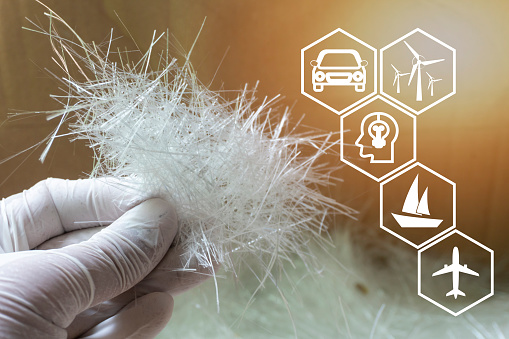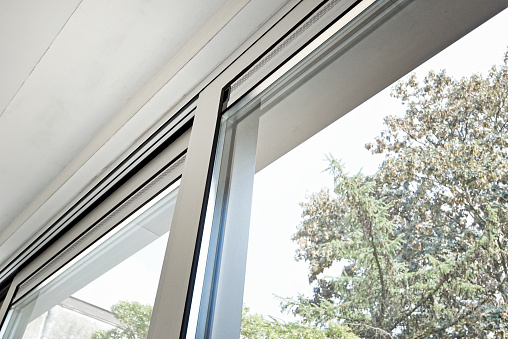
1.Filling modification (mineral filling)
By adding inorganic mineral (organic) powder to ordinary plastics, the rigidity, hardness, heat resistance and other properties of plastic materials can be improved. There are many types of fillers and their properties are extremely complex.
The role of plastic fillers: improve plastic processing performance, improve physical and chemical properties, increase volume, and reduce costs.
Requirements for plastic additives:
(1) The chemical properties are inactive, inert, and do not have adverse reactions with resins and other additives;
(2) Does not affect the water resistance, chemical resistance, weather resistance, heat resistance, etc. of plastics;
(3) Does not reduce the physical properties of plastics;
(4) Can be filled in large quantities;
(5) The relative density is small and has little effect on the density of the product.

2. Enhanced modification (glass fiber/carbon fiber)
Reinforcement measures: by adding fibrous substances such as glass fiber and carbon fiber.
Reinforcement effect: It can significantly improve the rigidity, strength, hardness and heat resistance of the material,
Bad effects of modification: But many materials can lead to poor surface and lower elongation at break.
Enhancement principle:
(1) The reinforced material has high strength and modulus;
(2) The resin has many inherent excellent physical, chemical (corrosion resistance, insulation, radiation resistance, instantaneous high temperature ablation resistance, etc.) and processing properties;
(3) After the resin is combined with the reinforcing material, the reinforcing material can improve the mechanical or other properties of the resin, and the resin can bond and transmit load to the reinforcing material, so that the reinforced plastic has excellent performance.
3. Toughening modification
There are many materials with insufficient toughness and too brittle. By adding materials with better toughness or ultra-fine inorganic materials, the toughness and low-temperature performance of the material can be increased.
Toughener: An additive added to the resin in order to reduce the brittleness of the plastic after hardening and increase its impact strength and elongation.
Commonly used toughening agents – mostly maleic anhydride graft compatibilizers:
Ethylene-vinyl acetate copolymer (EVA)
Polyolefin Elastomer (POE)
Chlorinated polyethylene (CPE)
Acrylonitrile-butadiene-styrene copolymer (ABS)
Styrene-butadiene thermoplastic elastomer (SBS)
Ethylene Propylene Diene Monomer (EPDM)

4. Flame retardant modification (halogen-free flame retardant)
In many industries such as electronic appliances and automobiles, materials are required to have flame retardancy, but many plastic raw materials have low flame retardancy. Improving flame retardancy can be achieved by adding flame retardants.
Flame retardants: Also known as flame retardants, fire retardants or fire retardants, functional additives that endow flammable polymers with flame retardancy; most of them are VA (phosphorus), VIIA (bromine, chlorine) and Compounds of Group IIIA (antimony, aluminum) elements.
Molybdenum compounds, tin compounds, and iron compounds that have smoke suppression effects also belong to the category of flame retardants, and are mainly suitable for plastics that require flame retardancy to delay or prevent the burning of plastics, especially polymer plastics. It increases the ignition time, ignites self-extinguishing, and is difficult to ignite.
Plastic flame retardant grade: gradually increase from HB, V-2, V-1, V-0, 5VB to 5VA.

5. Weather resistance modification (anti-aging, anti-ultraviolet, low temperature resistance)
Generally refers to the cold resistance of plastics at low temperatures. Due to the inherent low temperature brittleness of plastics, plastics become brittle at low temperatures. Therefore, for many plastic products used in low temperature environments, cold resistance is generally required.
Weather resistance: refers to a series of aging phenomena such as fading, discoloration, cracking, pulverization and strength reduction of plastic products due to the influence of external conditions such as sunlight, temperature changes, and wind and rain. UV exposure is a key factor in aging plastics.

6. Modified alloy
Plastic alloy is the use of physical blending or chemical grafting and copolymerization methods to prepare two or more materials into a new material with high performance, functionality and specialization, so as to improve the performance of one material or combine the two. The purpose of material properties. It improves or enhances the performance of existing plastics and reduces costs.
General-purpose plastic alloys: such as PVC, PE, PP, and PS alloys are widely used, and the production technology has been generally mastered.
Engineering plastic alloys: generally refers to blends of engineering plastics (resins), mainly including blending systems based on engineering plastics such as PC, PBT, PA, POM (polyoxymethylene), PPO, PTFE (polytetrafluoroethylene), And ABS resin modified materials.
The growth rate of the usage of PC/ABS alloy is at the forefront in the field of plastics. At present, PC/ABS alloying research has become a hot spot in polymer alloy research.











